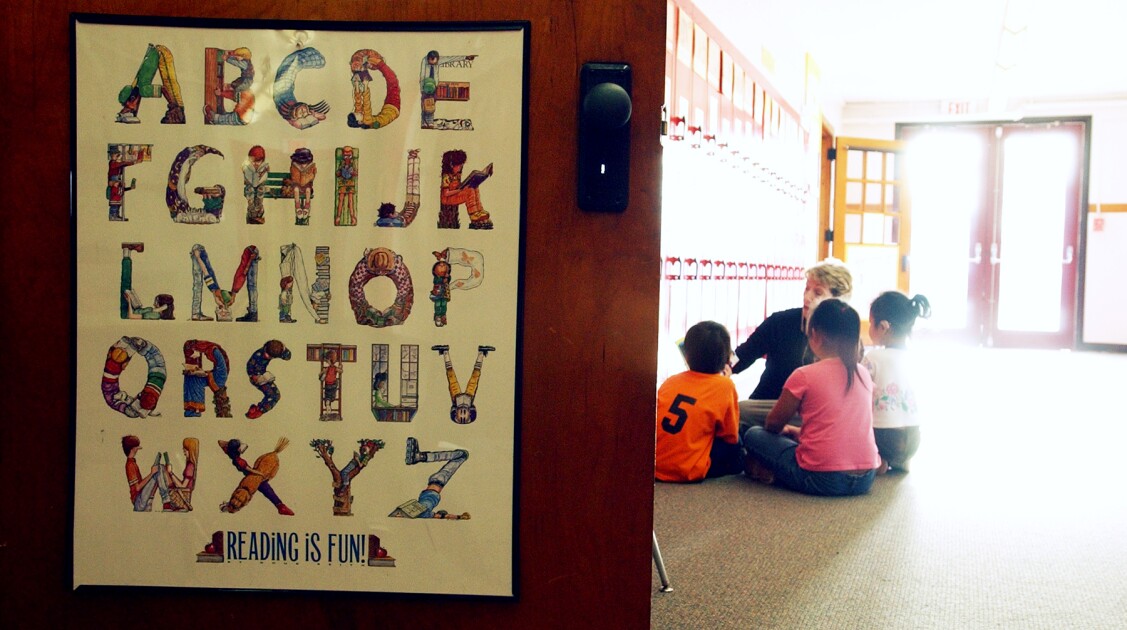If people don’t make voting a practice, democracy drowns.
Our democracy needs all hands on deck as the looming storm of this fall’s election approaches. In aid of our political system and for the sake of civic education, educators should facilitate student participation in strictly nonpartisan, classroom-organized voter-registration and get-out-the-vote drives.
Although official voter-registration deadlines are rapidly approaching, there is still sufficient time for the nation’s 20 million students in grades 6-12 to help meaningfully increase voter-participation numbers. That’s especially true for the seven swing states that will, it is widely believed, determine the presidential election this November. Georgia, for instance, has a registration deadline of Oct. 7 while Pennsylvania’s is Oct. 21.
Further good news is that most states provide online voter registration, including all the swing states, so students can encourage potential voters to sign up immediately. Still, time is short, and teachers should get on this project ASAP.
During my three decades teaching high school social studies in the Seattle public schools, I helped hundreds of students to participate in such drives. They were always successful, often magically so.
The process is simple. I’ve provided teacher guidance and student handouts at civicsforall.org. Just a few class periods are enough to orchestrate the project.
With class time precious, you might still be hesitating. But consider the words of Horace Mann, often called the father of American public education: “Education is our only political safety. Outside of this ark, all is deluge.”
Mann also noted that “education must bring the practice as nearly as possible to the theory.” Nothing brings the theory of democracy as close to students as the practice of directly addressing potential voters in the context of our national failure to get more people to the polls.
Despite massive Republican and Democrat voter-turnout efforts, tens of millions of members of the nation’s voting-eligible population shirk their duty to vote each fall. Although the 2020 presidential election had the highest turnout since 1900, a third of those eligible to vote did not, according to the Pew Research Center.
This tragic lack of turnout threatens the very legitimacy of our polity. And it is infecting our youth’s faith in our government.
The 2021 Harvard Youth Poll showed that 52 percent of young people in the United States believed that the country’s democracy is either “in trouble” or “failed” and that just 7 percent said that democracy in the United States is “healthy.” In the 2023 poll, most respondents said they did not believe their high school education had prepared them for the practical aspects of voting.
Americans can still appreciate the virtues of young people trying to help unite folks around the hallowed act of voting.
Fortunately, running classroom voter-registration and get-out-the-vote drives across the nation can help restore our kids’ faith in our politics and provide them with practical voting knowledge. Social studies teachers should lead the effort, and parents, principals, and government and school district officials should support them.
As an example, the Seattle school district’s social studies program manager years ago committed to encouraging participation of all secondary social studies teachers in such activities as part of the city’s broad support for running annual mock elections.
The pedagogical and affective benefits of participating in a voter-registration and get-out-the-vote drive are enormous. Students learn a ton as they help educate and motivate potential voters outside of school to register and, even if they are already registered, commit to voting. I’ve had many students register family members as well as fellow citizens at their places of worship, outside the neighborhood corner store, at Friday night football games, and elsewhere.
Such authentic participation in this seminal election is crucial for American adolescents because toxic political partisanship has seeped so deeply into our public school system. Many teachers are tempted to minimize or simply avoid election coverage in order to stand above the fray. But a voter drive offers another path, one that is clearly set apart from partisanship. Surely, Americans can still appreciate the virtues of young people trying to help unite folks around the hallowed act of voting.
It’s also relevant that America’s youth mental health crisis has reached epidemic proportions, with the American Psychological Association recently reporting that more than 20 percent of teens have seriously considered suicide. Voter drives help teachers safely shepherd students out of lonely lives and connect kids to their families and communities in a new and hopeful way. Many students are literally dying for hope, for something bigger than themselves to believe in. The connections that students make during a drive are so healthy for them and so easy for educators to facilitate that I promise my fellow teachers that it’s absolutely worth fitting this activity into the classroom calendar and curriculum.
The mechanics of the drive are easy. The tally sheets I used for my drives have space for 10 prospective voters to sign on and make a nonbinding commitment to register and/or vote. Filled sheets are submitted to the teacher for credit (or not). Many students help dozens of citizens to register. Some whose home language is not English translate for their elders and teach family members how to vote.
I encourage students and classes to compete against one another for who gets the most tally sheets filled in. If they like, teachers can easily set up competitions among classes, grades, and even schools.
In all my years of teaching, nothing beat the voter drives for impact. I’ll never forget when, before the 2012 presidential election, my students shared their voting-registration experiences with the class. One 18-year-old student reported that she had not only helped both her parents register to vote for the first time in their lives, but that all three had submitted their ballots together.
As she proudly recounted the story to our hushed class, the din of the election fell away. Instead, as her peers applauded her achievement, we heard the sterling sound of democracy in action.









